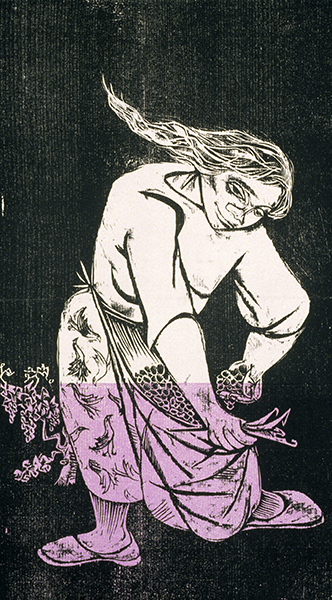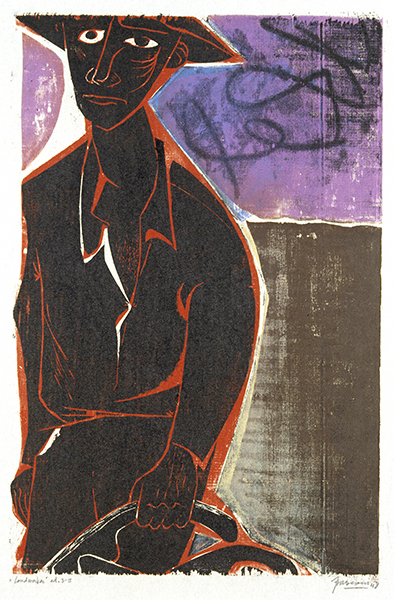Hispanic Heritage Month: Antonio Frasconi
Like graphic artists in Mexico during the mid-1900s, Antonio Frasconi was a tireless chronicler of poor and underserved people—first depicting those of Uruguay, where he was raised, and later among the migrant Latin American farmworkers of California. His prints contribute to the great body of work executed by Latin American and Hispanic artists during the mid-1900s, advocating for the people who—still to this day—help feed Americans through their hard work.
 |
| Antonio Frasconi (1919–2013, U.S., born Argentina), Portrait of a Picker, 1951. Color woodcut on paper, 16" x 8 15/16" (40.6 x 22.7 cm). Courtesy of The Cleveland Museum of Art. © 2023 Artist or Artist’s Estate / Licensed by VAGA at Artists Rights Society (ARS), New York. (CL-1068frvg) |
Because of the dominance of abstraction in painting and sculpture created in the United States at the time, most of the socially conscious Latin American art shown in the U.S. in the 1950s was made by graphic artists such as Frasconi. This print from his series on farmworkers represents a style that endured through the 1950s. Using flattened and abstracted shapes for the woman’s body, Frasconi communicates the message of the work with a few simple lines. The figure is contrasted with a blank black background, making the subject of overworked agricultural laborers the clear focal point. This series of prints were among the first in which Frasconi introduced color. They are remarkable for his sensitivity in using the grain of the wood to outline the figure.
 |
| Antonio Frasconi, Landworker, 1948. Color woodcut on paper, 21 3/4" x 13" (55.2 x 33 cm). Courtesy of The Cleveland Museum of Art. © 2023 Artist or Estate of Artist / Licensed by VAGA at Artists Rights Society (ARS), New York. (CL-773frvg) |
Frasconi conveys his message with force and poignancy in Landworker. He emphasized the gaunt facial features of this weary migrant farmworker with a few simple lines and colored shapes. The figure contrasts with the abstracted background, which represents the land he works by hand.
Born in Buenos Aires, Argentina, Frasconi was raised in Montevideo, Uruguay. There, he attended architecture school and the Circulo de Bellas Artes (Circle of Fine Arts). Through jobs as a political cartoonist and book illustrator, he strengthened his realistic style. Frasconi’s cartoons of the period criticized abuses of power in government, a testament to his interest in connecting his art to the life of the common people. This is similar to the goals of the Taller Gráfica Popular (Peoples’ Printmaking Studio) in Mexico.
In 1945—the nascent period of Abstract Expressionism in the United States—Frasconi studied at the Art Students League in New York. Exposed to European modernism during his studies, Frasconi was influenced by Cubism. However, the only effect abstraction had on his work was a simplification of form achieved by organizing compositions into geometric shapes.
After a year in New York, Frasconi moved to Santa Barbara, California, where he became interested in the plight of migrant Mexican farmworkers. Between 1948 and 1953, he issued a series of images documenting their backbreaking work. In the 1980s, Frasconi produced the print series Los Desaparecidos, bringing attention to the people disappeared by dictatorships in Uruguay, Argentina, and Chile.
Correlations to Davis programs: Explorations in Art 2E Grade 2: 5.6; Explorations in Art 2E Grade 6: 1.1, 1.4, 1.5; A Community Connection 2E: 8.4; A Personal Journey 2E: 2.1, 2.4, 4.4; A Global Pursuit 2E: 3.1, 5.5; Experience Art: p. 395; The Visual Experience 4E: 8.6; Experience Printmaking: Chapter 3


Comments